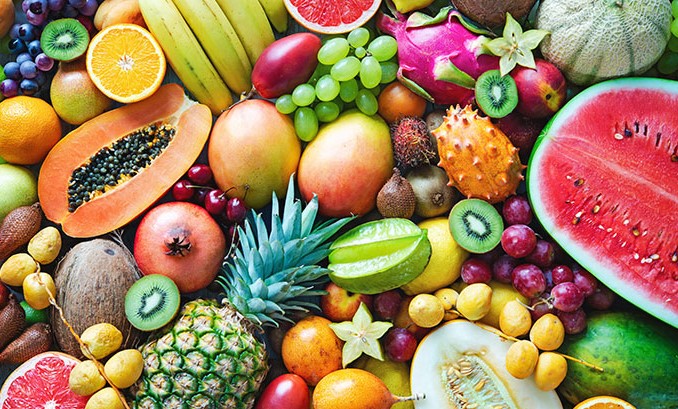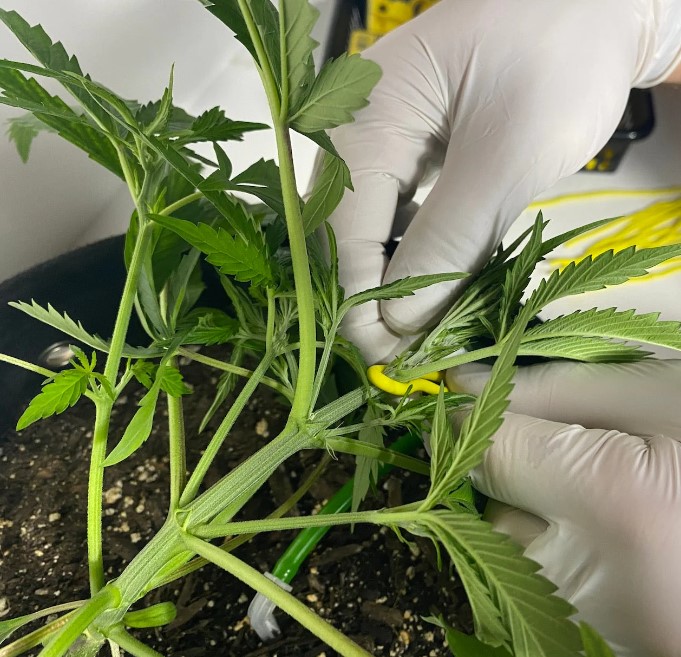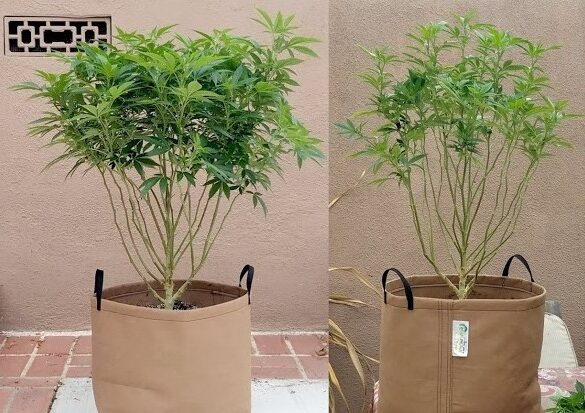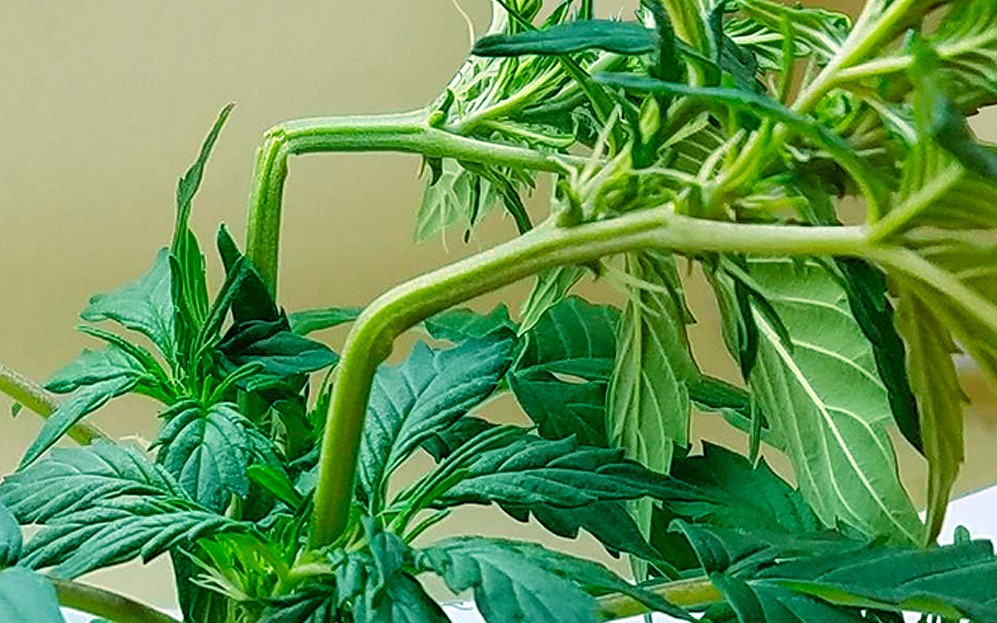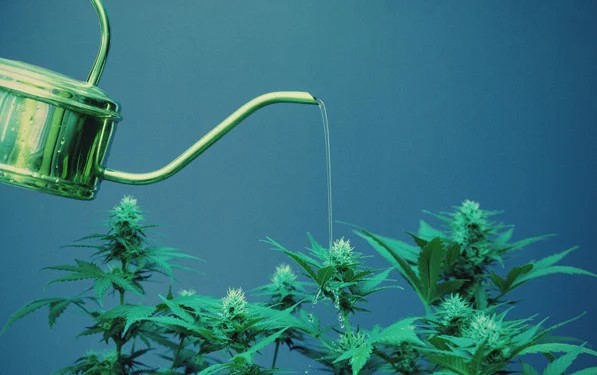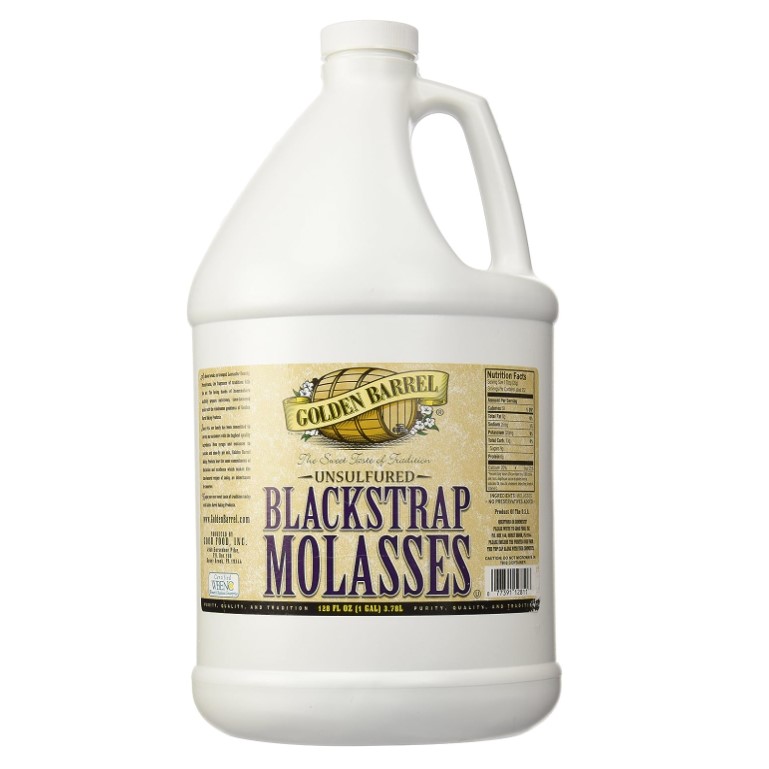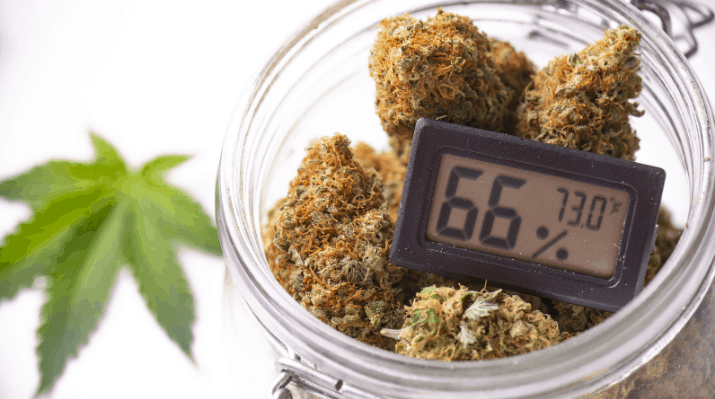Cannabis enthusiasts and growers alike often wonder how to maximize the flavors of their cannabis. Whether you’re a seasoned grower or a recreational user, the taste of cannabis can greatly enhance your overall experience. In this comprehensive guide, we will explore various techniques and methods to enhance the flavors of cannabis. From stress techniques during the growing phase to post-harvest strategies, we will cover it all. So, let’s dive in and discover how to unlock the full potential of flavor in cannabis.
Table of Contents
Stress Techniques for Flavor Enhancement
a. Low-Stress Training (LST)
b. Defoliation
c. Supercropping
d. Stressing Through Watering
e. Stem Splitting
Boosting Terpene Production with Nutrients
The Power of Soil: Growing in a Super Soil Mix
The Role of Humidity in Flavor Enhancement
Drying and Curing for Flavor Optimization
Enhancing Flavor for Purchased Buds
Understanding the Importance of Terpenes in Flavor
The key to enhancing the flavors of cannabis lies in understanding the role of terpenes. Terpenes are aromatic compounds found in the trichomes of the cannabis plant, which give each strain its unique flavor and aroma profile. By focusing on strains that are known for their specific flavors, you can create a more enjoyable and flavorful cannabis experience. Whether you prefer fruity flavors like mango or citrus, or more earthy and herbal notes, there is a strain out there for everyone.
To increase the terpene content in your cannabis plants, it’s essential to stress the plants during their growth phase. By implementing various stress techniques, you can encourage the production of more terpenes and ultimately enhance the flavors of your cannabis.
Cannabis Terpenes Chart with Flavors
| Terpene | Flavor Profile | Effects | Medicinal Uses |
|---|---|---|---|
| Myrcene | Earthy, musky, herbal | Sedative, relaxing, calming | Sleep aid, muscle relaxant, anti-inflammatory |
| Limonene | Citrus, lemon | Uplifting, energizing, anti-anxiety | Stress relief, mood enhancement, anti-depressant |
| Pinene | Pine, woodsy | Alertness, memory retention, anti-inflammatory | Bronchodilator, anti-inflammatory |
| Caryophyllene | Spicy, peppery | Anti-anxiety, anti-depressant, anti-inflammatory | Pain relief, anti-inflammatory, stress reduction |
| Humulene | Earthy, woody, herbal | Appetite suppressant, anti-inflammatory | Weight loss, anti-inflammatory |
| Linalool | Floral, lavender | Relaxing, calming, anti-anxiety | Sleep aid, anxiety relief, anti-depressant |
| Terpinolene | Floral, herbal, fruity | Uplifting, antioxidant, anti-insomnia | Anti-cancer, antioxidant |
| Ocimene | Citrus, sweet, tropical | Energizing, anti-fungal, anti-inflammatory | Antifungal, anti-inflammatory |
| Terpineol | Floral, herbal, lilac | Relaxing, antioxidant, anti-anxiety | Antibiotic, antioxidant |
| Phytol | Floral, balsamic | Sedative, antioxidant, anti-inflammatory | Neuroprotective, antioxidant |
| Bisabolol | Floral, sweet, fruity | Relaxing, anti-inflammatory, anti-irritant | Skin conditions, anti-inflammatory |
| Camphene | Herbal, pungent, camphor | Cooling, anti-inflammatory, antioxidant | Cardiovascular health, antioxidant |
| Terpinene | Herbal, sweet, citrus | Antioxidant, anti-bacterial, anti-fungal | Antioxidant, respiratory health |
| Valencene | Sweet, citrus, orange | Uplifting, anti-inflammatory, anti-anxiety | Anti-inflammatory, mood enhancement |
| Eucalyptol | Minty, cooling, camphoraceous | Respiratory aid, mental clarity, anti-inflammatory | Respiratory health, cognitive function |
| Geraniol | Floral, rose, fruity | Anti-anxiety, anti-depressant, anti-inflammatory | Stress relief, mood enhancement, pain relief |
| Pulegone | Minty, herbal, camphoraceous | Memory enhancement, anti-inflammatory | Cognitive function, anti-inflammatory |
| Sabinene | Spicy, citrus, woody | Anti-inflammatory, antioxidant, antimicrobial | Digestive health, antioxidant, antimicrobial |
| Caryophyllene Oxide | Woody, spicy, peppery | Anti-inflammatory, antioxidant, anti-fungal | Pain relief, anti-inflammatory, antifungal |
| Nerolidol | Floral, citrus, woodsy | Sedative, anti-anxiety, antimicrobial | Sleep aid, anxiety relief, antimicrobial |
| Camphor | Strong, aromatic, medicinal | Cooling, anti-inflammatory, respiratory aid | Pain relief, respiratory health |
| Borneol | Earthy, camphoraceous, minty | Calming, anti-inflammatory, analgesic | Stress relief, pain relief, anti-inflammatory |
| Phellandrene | Minty, citrus, herbal | Energizing, appetite suppressant, anti-inflammatory | Focus, weight loss, anti-inflammatory |
| Alpha-Pinene | Pine, fresh, herbal | Alertness, memory enhancement, anti-inflammatory | Bronchodilator, cognitive function, anti-inflammatory |
| Beta-Pinene | Pine, earthy, herbal | Alertness, memory enhancement, anti-inflammatory | Bronchodilator, cognitive function, anti-inflammatory |
| Delta-3-Carene | Sweet, earthy, piney | Energetic, anti-inflammatory, drying agent | Decongestant, anti-inflammatory, drying agent |
| Alpha-Bisabolol | Floral, sweet, fruity | Relaxing, anti-inflammatory, anti-irritant | Skin conditions, anti-inflammatory |
| Alpha-Humulene | Woody, earthy, herbal | Anti-inflammatory, appetite suppressant | Pain relief, weight loss, anti-inflammatory |
| Gamma-Terpinene | Citrus, herbal, sweet | Antioxidant, anti-bacterial, anti-fungal | Antioxidant, respiratory health, antimicrobial |
Stress Techniques for Flavor Enhancement
Enhancing the flavor profile of cannabis involves strategic stress techniques that, when applied with precision, can elevate the terpene content and overall taste. Each method plays a distinct role in maximizing the plant’s potential without compromising its health.
a. Low-Stress Training (LST): Cultivating Flavor and Form
Low-Stress Training (LST) is a nuanced approach where cultivators delicately manipulate the plant’s architecture by gently bending its stems. Beyond optimizing light distribution, LST induces mild stress that stimulates the production of terpenes, thereby enriching the flavor profile. This technique proves especially advantageous for indoor growers seeking to maximize spatial efficiency and light utilization. Careful implementation of LST ensures an even canopy, promoting consistent growth and flavor development.
b. Defoliation: Channeling Energy for Intensified Flavors
Defoliation is a meticulous process involving the selective removal of specific leaves, primarily the larger fan leaves. By strategically thinning out foliage, defoliation enhances airflow and facilitates better light penetration to the lower canopy. This optimizes energy distribution within the plant, channeling resources towards bud development. The resultant stress response triggers heightened terpene production, contributing to a more robust and flavorful harvest. Thoughtful application of defoliation strikes a balance between stress and plant health, a key factor in achieving superior taste.
c. Supercropping: Nudging Flavor Intensity through Controlled Stress
Supercropping is an artful technique that involves controlled bending or slight damage to plant branches. This deliberate stress induction prompts the cannabis plant to intensify resin and terpene production. While the stress triggers enhanced flavor complexity, caution must be exercised, especially with autoflowering strains characterized by a shorter lifespan. Supercropping demands a keen understanding of the plant’s growth patterns and resilience, ensuring that stress is applied judiciously for optimal flavor augmentation.
d. Stressing the Plants Through Watering
Another effective way to stress the plants and enhance the flavors is by adjusting your watering schedule. Towards the end of the flowering phase, you can slightly reduce the frequency of watering. This mild water stress can stimulate the plants to produce more resin and terpenes, resulting in richer and more flavorful buds.
e. Stem Splitting: Precision Stress for Flavor Elevation
Stem splitting is an advanced technique gaining popularity among cannabis cultivators for its ability to induce stress strategically, fostering an intensified terpene expression and flavor enhancement. This method involves making precise incisions or splits along the main stem, prompting the plant to react by redirecting energy towards terpene production. Stem splitting, when executed with care, can contribute to a more complex and robust flavor profile.
This method is particularly effective during the flowering phase, as the plant responds dynamically to stressors at this stage. Stem splitting creates controlled stress, encouraging the cannabis plant to produce additional resin and terpenes as a protective response. However, it is imperative to exercise caution and ensure proper hygiene measures during the process to prevent infection or other complications.
Boosting Terpene Production with Nutrients to Enhance the Flavors of Cannabis
Apart from stress techniques, you can also boost terpene production by providing the plants with the right nutrients. Several products in the market are specifically designed to enhance terpene production. These products contain ingredients like Terpinator, Sweet, and Rock Resinator, which stimulate resin and terpene production.
However, if you prefer a homemade approach, you can use natural ingredients like molasses. When added to your watering routine, molasses feeds the beneficial microbes in the soil, enhancing nutrient uptake and terpene production. Additionally, you can add magnesium sulfate or Epsom salts to further increase resin production.
Growing in a Super Soil Mix to Enhance the Flavors of Cannabis
The soil you choose plays a crucial role in the overall flavor development of your cannabis. Growing your crop in a super soil mix can significantly enhance the flavors and terpene profiles. Super soil mixes are highly fertile and contain all the necessary macro and micronutrients, as well as beneficial bacteria and fungi.
Creating your own super soil mix requires some effort and attention to detail, but the results are worth it. One popular recipe for a super soil mix is Subcool’s Super Soil Mix, which includes organic potting soil, worm castings, bone meal, bat guano, rock phosphate, Epsom salts, sweet lime, and azomite. Mixing these ingredients thoroughly and allowing the mix to “cook” or cure for a month creates a nutrient-rich soil that can greatly enhance the flavors of your cannabis.
The Role of Humidity to Enhance the Flavors of Cannabis
Humidity levels can also impact the flavors of your cannabis. Maintaining the right humidity throughout the growing and curing process is crucial for preserving and enhancing the terpene profiles. It’s recommended to keep the humidity levels stable and within the optimal range of 50-65%.
To increase humidity during the growing phase, you can use a humidifier or mist water on the leaves. However, be cautious not to create excessive wetness, as it can lead to mold and other fungal issues. When it comes to curing, using airtight mason jars can help retain moisture and preserve the flavors. Burping the jars regularly to release excess moisture is essential during the curing process.
Drying and Curing to Enhance the Flavors of Cannabis
Proper drying and curing techniques are crucial for maximizing flavor potential. After harvesting your cannabis plants, drying the buds is the first step. During the drying process, the buds lose moisture, and chlorophyll breaks down, resulting in a smoother and more flavorful smoke.
It’s important to find the right balance during drying, as both under-drying and over-drying can affect the flavor. The ideal drying conditions include a humidity level of 55-60% and a temperature of around 20°C. Depending on your specific conditions, you can choose between dry trimming or wet trimming before the drying process.
Once the buds are properly dried and trimmed, it’s time for the curing process. Curing involves placing the buds in airtight containers, such as mason jars, to allow them to “sweat” and develop their flavors over time. Burping the jars regularly during the first week helps release excess moisture. After the initial curing phase, the buds can be stored in a cool, dark place to maintain their flavors.
Enhancing Flavor for Purchased Buds
If you’re not a grower but still want to enhance the flavors of your purchased buds, there are a few tricks you can try. When storing your cannabis, be sure to use airtight containers to preserve freshness. Additionally, you can introduce natural flavor enhancers, such as lemon slices, to the container. This can infuse a citrusy aroma and taste into your buds, enhancing the overall flavor experience.
However, it’s important to use caution when using flavor enhancers, as leaving slices in the container for too long can lead to mold growth. Keep the slices in the container for a limited period, typically around 12 hours, to avoid any moisture-related issues.
Conclusion
Enhancing the flavors of cannabis is an art that requires a combination of proper techniques, nutrients, and careful attention to detail. By implementing stress techniques during the growing phase, using products that boost terpene production, growing in a super soil mix, and optimizing drying and curing processes, you can unlock the full potential of flavor in your cannabis. Whether you’re a grower or a consumer, these tips and techniques will help you create a more enjoyable and flavorful cannabis experience. Experiment, explore, and savor the wide range of flavors that cannabis has to offer.

